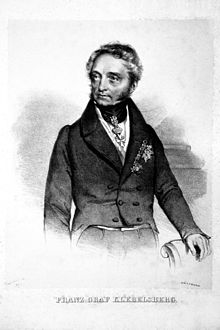Apportionment paradox
An apportionment paradox exists when the rules for apportionment in a political system produce results which are unexpected or seem to violate common sense.
To apportion is to divide into parts according to some rule, the rule typically being one of proportion. Certain quantities, like milk, can be divided in any proportion whatsoever; others, such as horses, cannot—only whole numbers will do. In the latter case, there is an inherent tension between the desire to obey the rule of proportion as closely as possible and the constraint restricting the size of each portion to discrete values. This results, at times, in unintuitive observations, or paradoxes.
Several paradoxes related to apportionment, also called fair division, have been identified. In some cases, simple post facto adjustments, if allowed, to an apportionment methodology can resolve observed paradoxes. However, as shown by examples relating to the United States House of Representatives, and subsequently proven by the Balinski–Young theorem, mathematics alone cannot always provide a single, fair resolution to the apportionment of remaining fractions into discrete equal whole-number parts, while complying fully with all the competing fairness elements.[1]: 227–235
History
An example of the apportionment paradox known as "the Alabama paradox" was discovered in the context of United States congressional apportionment in 1880,[1]: 228–231 when census calculations found that if the total number of seats in the House of Representatives were hypothetically increased, this would decrease Alabama's seats from 8 to 7. An actual impact was observed in 1900, when Virginia lost a seat to Maine, even though Virginia's population was growing more rapidly: this is an example of the population paradox.[1]: 231–232 In 1907, when Oklahoma became a state, New York lost a seat to Maine, thus the name "the new state paradox".[1]: 232–233 [2]
The method for apportionment used during this period, originally put forth by Alexander Hamilton, but vetoed by George Washington and not adopted until 1852,[1]: 228 was as follows:
- First, the fair share of each state is computed, i.e. the proportional share of seats that each state would get if fractional values were allowed.
- Second, each state receives as many seats as the whole number portion of its fair share.
- Third, any state whose fair share is less than one receives one seat, regardless of population, as required by the United States Constitution.
- Fourth, any remaining seats are distributed, one each, to the states whose fair shares have the highest fractional parts.
The Hamilton method replaced a rounding method proposed by Thomas Jefferson,[1]: 228 and was itself replaced by the Huntington–Hill method in 1941.[1]: 233 Under certain conditions, the Huntington-Hill method can also give paradoxical results.[citation needed]
Examples of paradoxes
Alabama paradox
The Alabama paradox was the first of the apportionment paradoxes to be discovered. The US House of Representatives is constitutionally required to allocate seats based on population counts, which are required every 10 years. The size of the House is set by statute.
After the 1880 census, C. W. Seaton, chief clerk of the United States Census Bureau, computed apportionments for all House sizes between 275 and 350, and discovered that Alabama would get eight seats with a House size of 299 but only seven with a House size of 300.[1]: 228–231 In general the term Alabama paradox refers to any apportionment scenario where increasing the total number of items would decrease one of the shares. A similar exercise by the Census Bureau after the 1900 census computed apportionments for all House sizes between 350 and 400: Colorado would have received three seats in all cases, except with a House size of 357 in which case it would have received two.[3]
The following is a simplified example (following the largest remainder method) with three states and 10 seats and 11 seats.
| With 10 seats | With 11 seats | ||||
|---|---|---|---|---|---|
| State | Population | Fair share | Seats | Fair share | Seats |
| A | 6 | 4.286 | 4 | 4.714 | 5 |
| B | 6 | 4.286 | 4 | 4.714 | 5 |
| C | 2 | 1.429 | 2 | 1.571 | 1 |
Observe that state C's share decreases from 2 to 1 with the added seat.
This occurs because increasing the number of seats increases the fair share faster for the large states than for the small states. In particular, large A and B had their fair share increase faster than small C. Therefore, the fractional parts for A and B increased faster than those for C. In fact, they overtook C's fraction, causing C to lose its seat, since the Hamilton method examines which states have the largest remaining fraction.
The Alabama paradox gave rise to the axiom known as house monotonicity, which says that, when the house size increases, the allocations of all states should weakly increase.
Population paradox
The population paradox is a counterintuitive result of some procedures for apportionment. When two states have populations increasing at different rates, a small state with rapid growth can lose a legislative seat to a big state with slower growth.
Some of the earlier Congressional apportionment methods, such as Hamilton, could exhibit the population paradox. In 1900, Virginia lost a seat to Maine, even though Virginia's population was growing more rapidly.[1]: 231–232 However, divisor methods such as the current method do not.[4]
New states paradox
Given a fixed number of total representatives (as determined by the United States House of Representatives), adding a new state would in theory reduce the number of representatives for existing states, as under the United States Constitution each state is entitled to at least one representative regardless of its population. Also, even if the number of members in the House of Representatives is increased by the number of Representatives in the new state, a pre-existing state could lose a seat because of how the particular apportionment rules deal with rounding methods. In 1907, when Oklahoma became a state, it was given a fair share of seats and the total number of seats increased by that number. The House increased from 386 to 391 members. A recomputation of apportionment affected the number of seats because of other states: New York lost a seat while Maine gained one.[1]: 232–233 [2]
앨라배마 역설은 일관성이라는 공리를 불러일으켰는데, 이는 주의 일부에 배분된 의석 중 일부에 배분된 할당 규칙이 활성화될 때마다 그 결과는 대안의 해결책에서와 같아야 한다는 것이다.
발린스키-영 정리
1983년, 두 수학자인 미셸 발린스키와 페이튼 영은 쿼터 룰을 위반하지 않는 배분의 방법이 세 개 이상의 당사자(또는 주, 지역 등)가 있을 때마다 역설로 귀결된다는 것을 증명했다.[5][6] 더 정확히 말하면, 그들의 정리는 다음과 같은 성질을[1]: 233–234 가진 배분 체계가 없다고 명시하고 있다(비례대표체제의 정당간 의석분할을 예로 들 수 있다).
- 할당량 규칙 위반을 방지한다. 각 정당은 정당 의석수에 가장 가까운 두 자리 중 하나를 얻는다. 예를 들어 정당득표율이 7.34석일 경우 7~8석을 얻어야 위반을 피할 수 있다.
- 전체 의석을 늘리면 어느 정당도 의석수가 줄어들지 않는다는 앨라배마 역설은 없다.
- A당이 더 많은 표를 얻고 B당이 더 적은 표를 얻으면 A에서 B당으로 의석이 옮겨지지 않는다는 인구 역설이 없다.
그들은 불가능의 증거를 보여준다: 배분 방법은 이러한 속성 중 일부를 가질 수 있지만, 모든 것을 가질 수는 없다.
- 어떤 방법은 할당량을 따르고 앨라배마 역설에서 자유로울 수 있다. 발린스키와 영은 비록 일반적인 정치적 용도는 아니지만 그렇게 하는 방법을 고안했다.[7]
- 방법은 앨라배마 역설과 인구 역설 둘 다에서 자유로울 수 있다. 이런 방법들이 디비저 방식인데,[4] 현재 하원 의석을 배분하는 데 쓰이는 방식인 헌팅턴힐도 그 중 하나다. 그러나 이러한 방법은 다른 상황에서 반드시 할당량을 준수하지 못할 것이다.
- 어떤 방법도 항상 할당량을 따르고 인구의 역설에서 자유로울 수는 없다.[4][8]
선거에서의 의석분할은 문화적으로 중요한 관심사다. 1876년 미국 대통령 선거는 남은 분수를 계산하는 방법에 불을 붙였다. 러더포드 헤이스는 185명의 선거인단을 받았고, 새뮤얼 틸든은 184표를 받았다. 틸든은 일반 투표에서 승리했다. 다른 라운딩 방식이라면 최종 선거인단 집계가 역전됐을 것이다.[1]: 228 그러나 많은 수학적으로 유사한 상황들이 발생하는데, 그 상황은 수량을 이산형 등 덩어리로 나누어야 한다.[1]: 233 발린스키-이러한 상황에는 젊은 정리가 적용된다: 매우 합리적인 근사치가 이루어질 수 있지만, 모든 경쟁적 공정성 요소를 준수하면서 작은 잔여분수를 조정하는 수학적으로 엄격한 방법은 없다는 것을 나타낸다.[1]: 233
참조
- ^ a b c d e f g h i j k l m n Stein, James D. (2008). How Math Explains the World: A Guide to the Power of Numbers, from Car Repair to Modern Physics. New York: Smithsonian Books. ISBN 9780061241765.
- ^ a b Caulfield, Michael J. (November 2010). "Apportioning Representatives in the United States Congress - Paradoxes of Apportionment". Convergence. Mathematical Association of America. doi:10.4169/loci003163.
- ^ Bogomolny, Alex (January 2002). "The Constitution and Paradoxes". Cut The Knot!.
- ^ a b c Smith, Warren D. (January 2007). "Apportionment and rounding schemes". RangeVoting.org.
- ^ Balinski, Michel L.; Young, H. Peyton (1982). Fair Representation: Meeting the Ideal of One Man, One Vote. New Haven: Yale University Press. ISBN 0-300-02724-9.
- ^ Balinski, Michel L.; Young, H. Peyton (2001). Fair Representation: Meeting the Ideal of One Man, One Vote (2nd ed.). Washington, DC: Brookings Institution Press. ISBN 0-8157-0111-X.
- ^ Balinski, Michel L.; Young, H. Peyton (November 1974). "A New Method for Congressional Apportionment". Proceedings of the National Academy of Sciences. 71 (11): 4602–4606. Bibcode:1974PNAS...71.4602B. doi:10.1073/pnas.71.11.4602. PMC 433936. PMID 16592200.
- ^ Balinski, Michel L.; Young, H. Peyton (September 1980). "The Theory of Apportionment" (PDF). Working Papers. International Institute for Applied Systems Analysis. WP-80-131.


